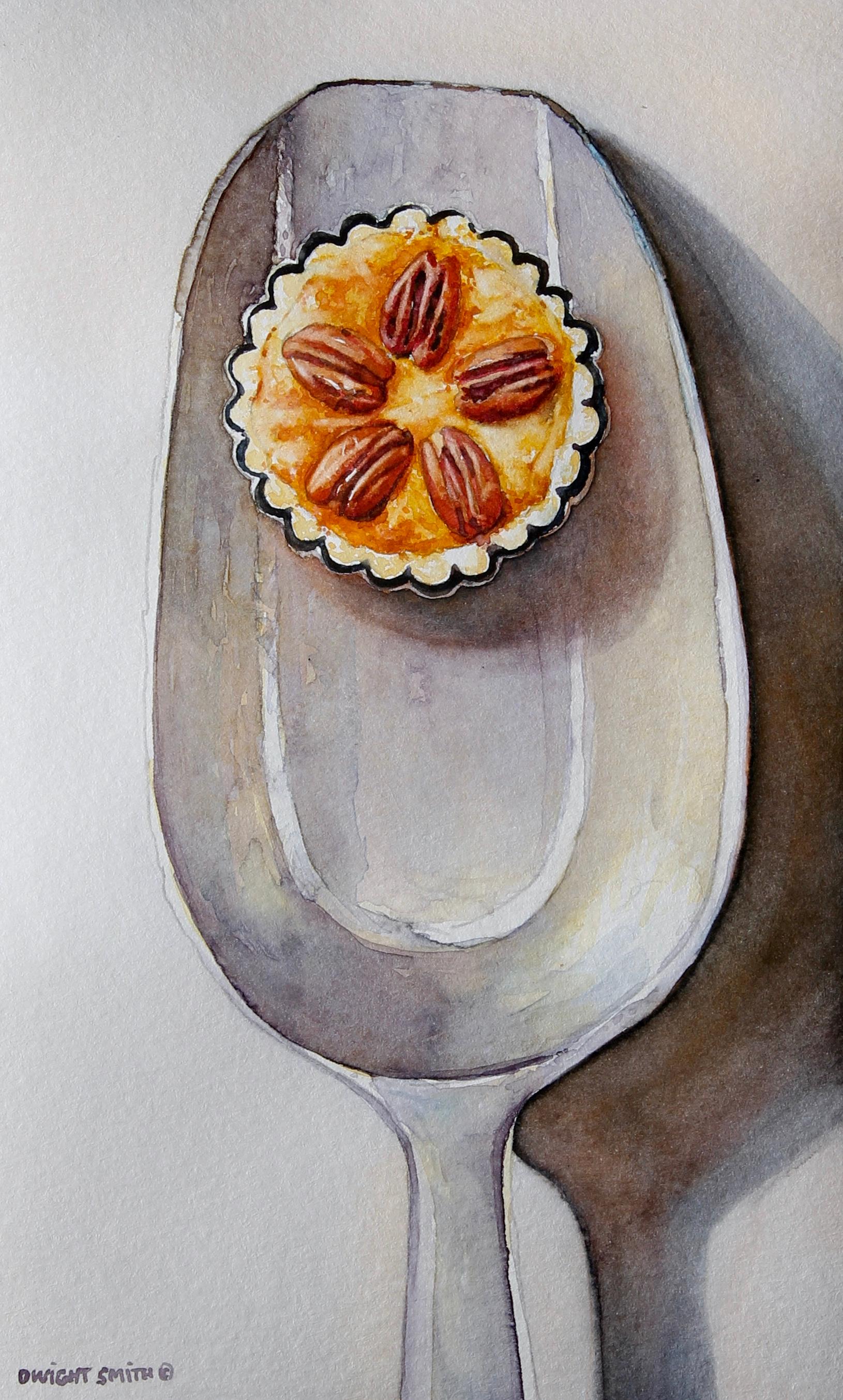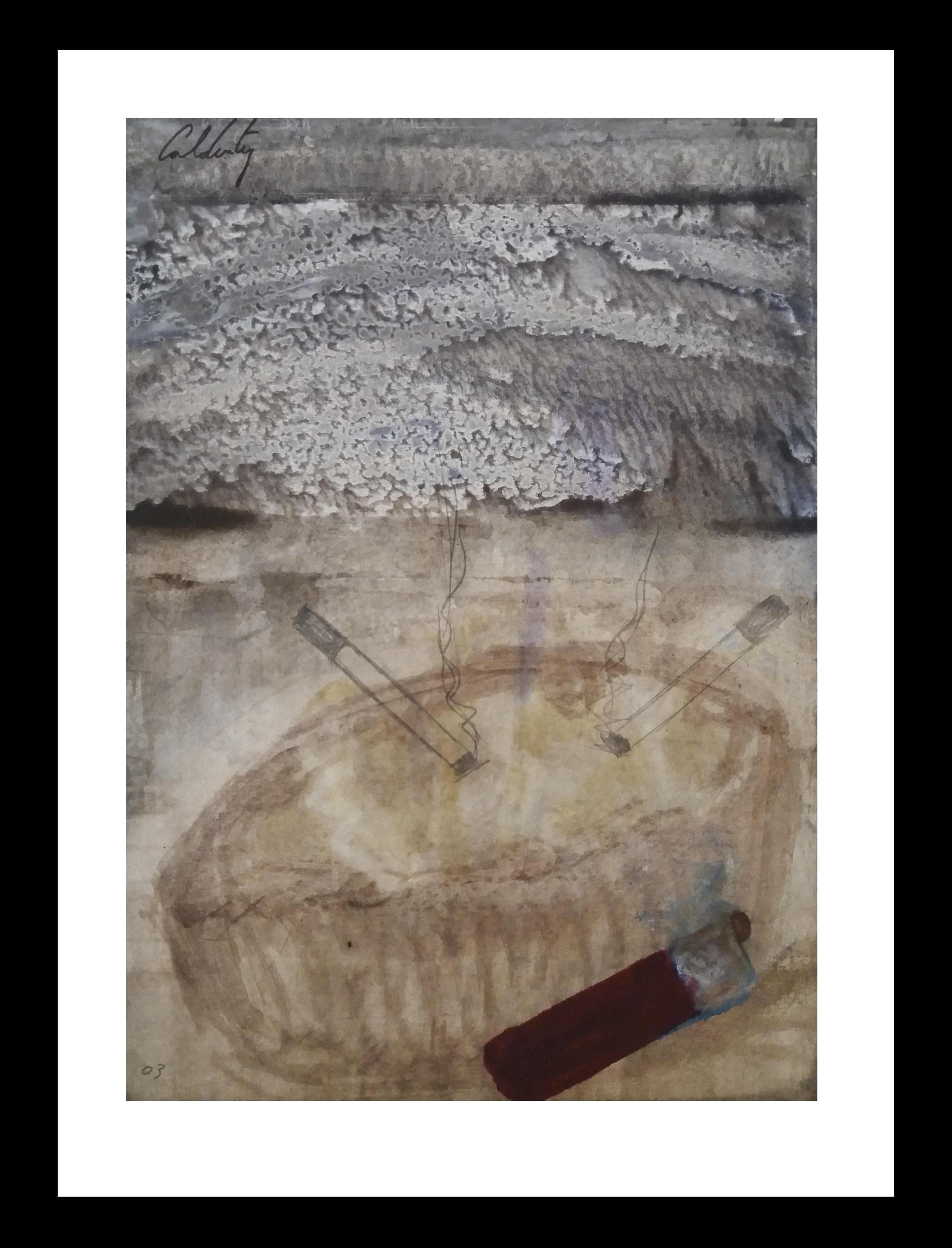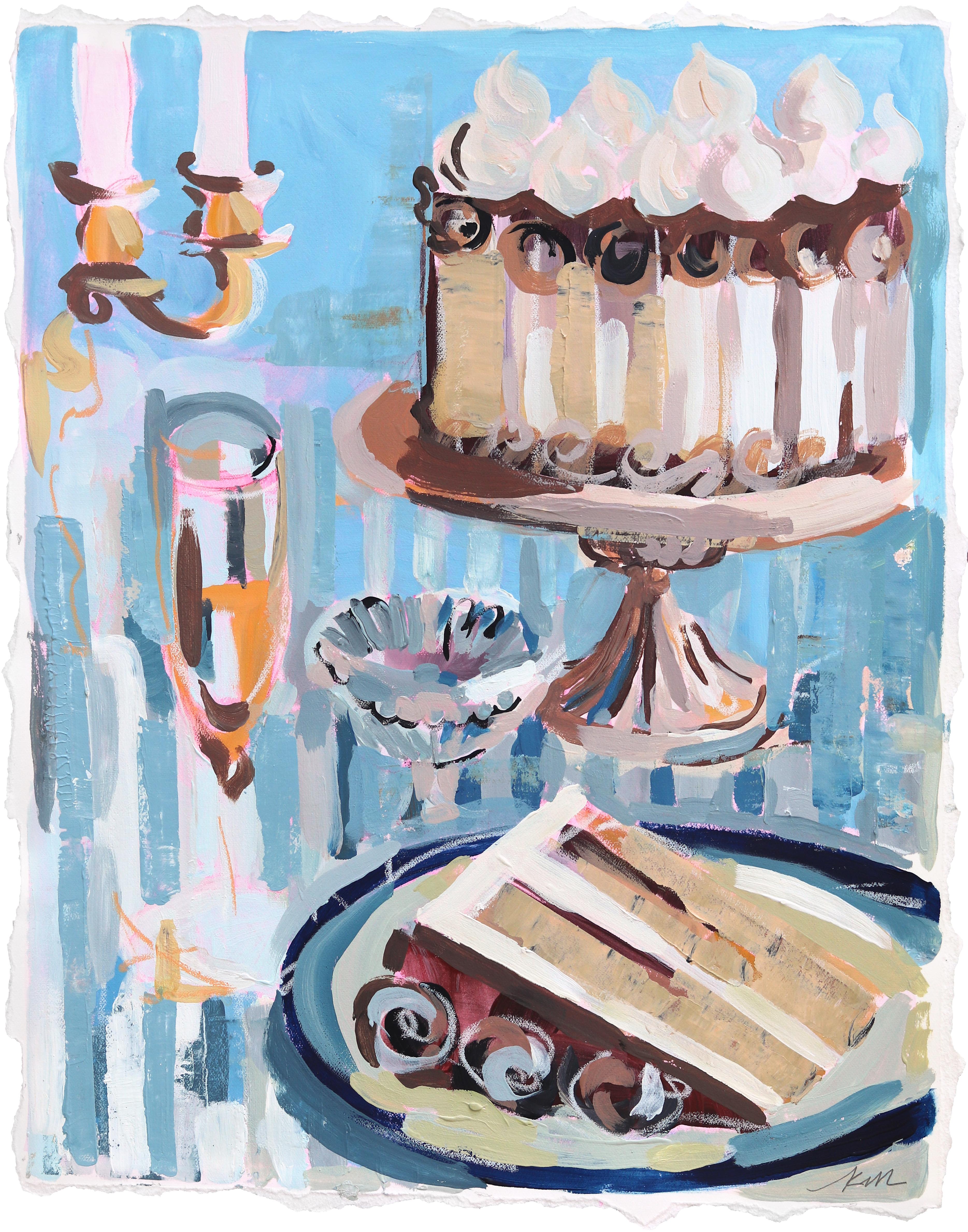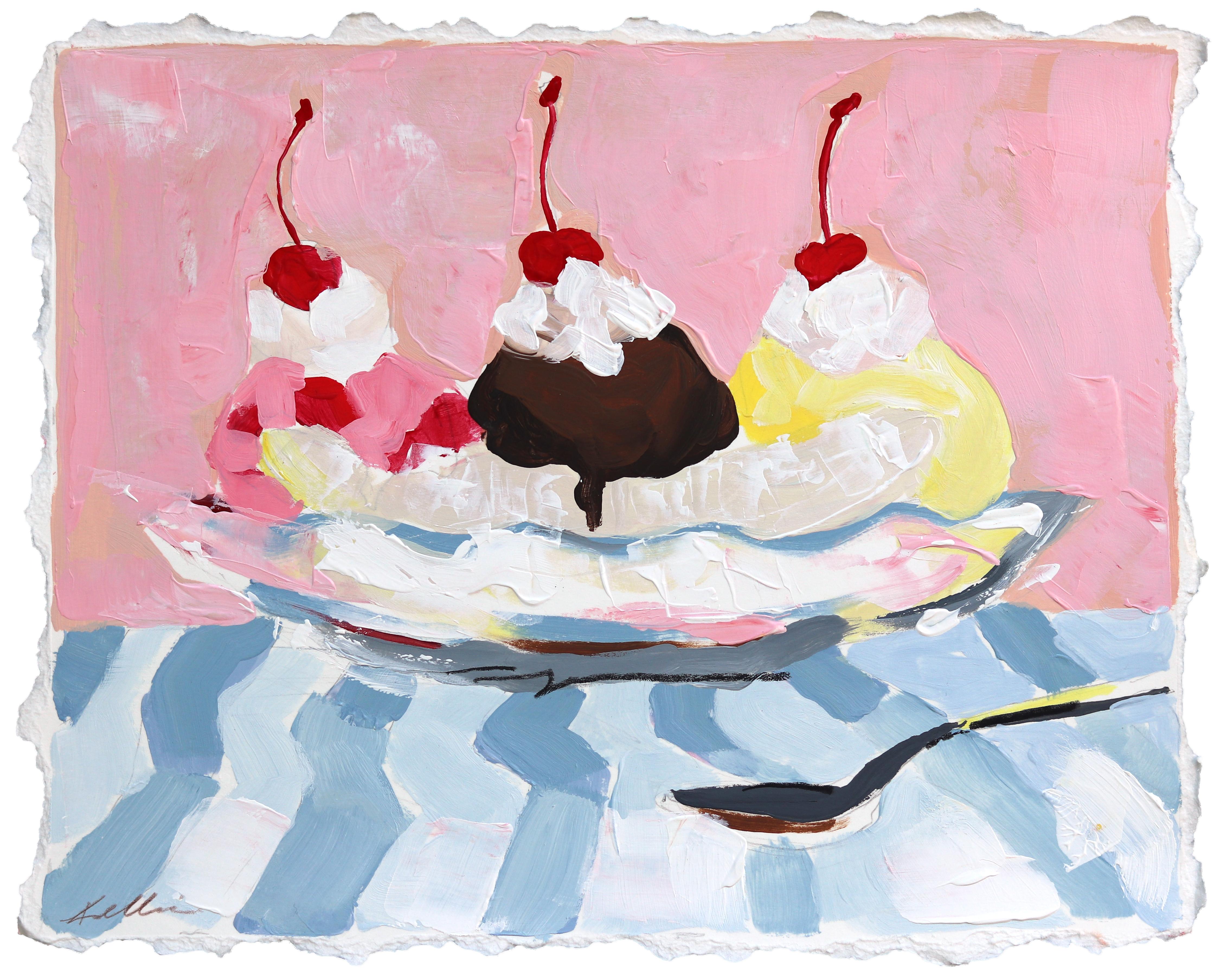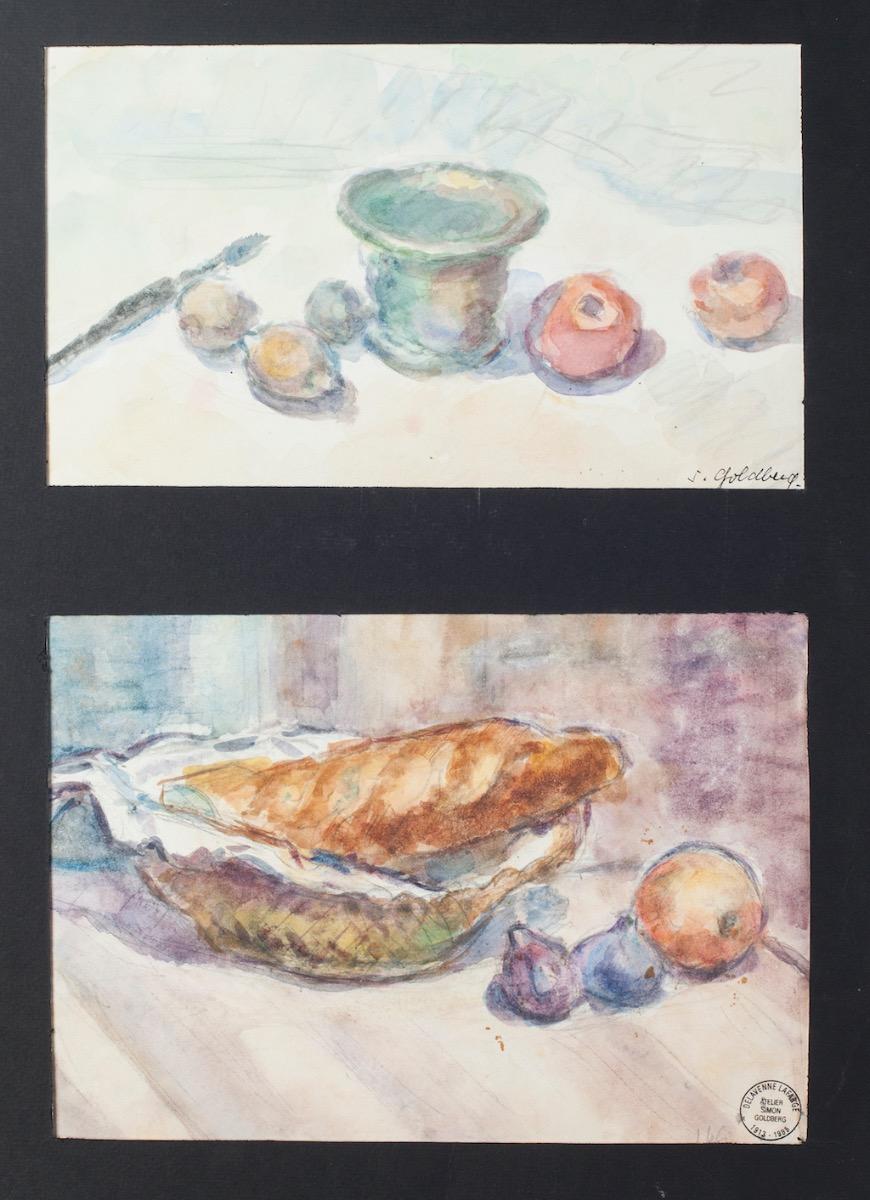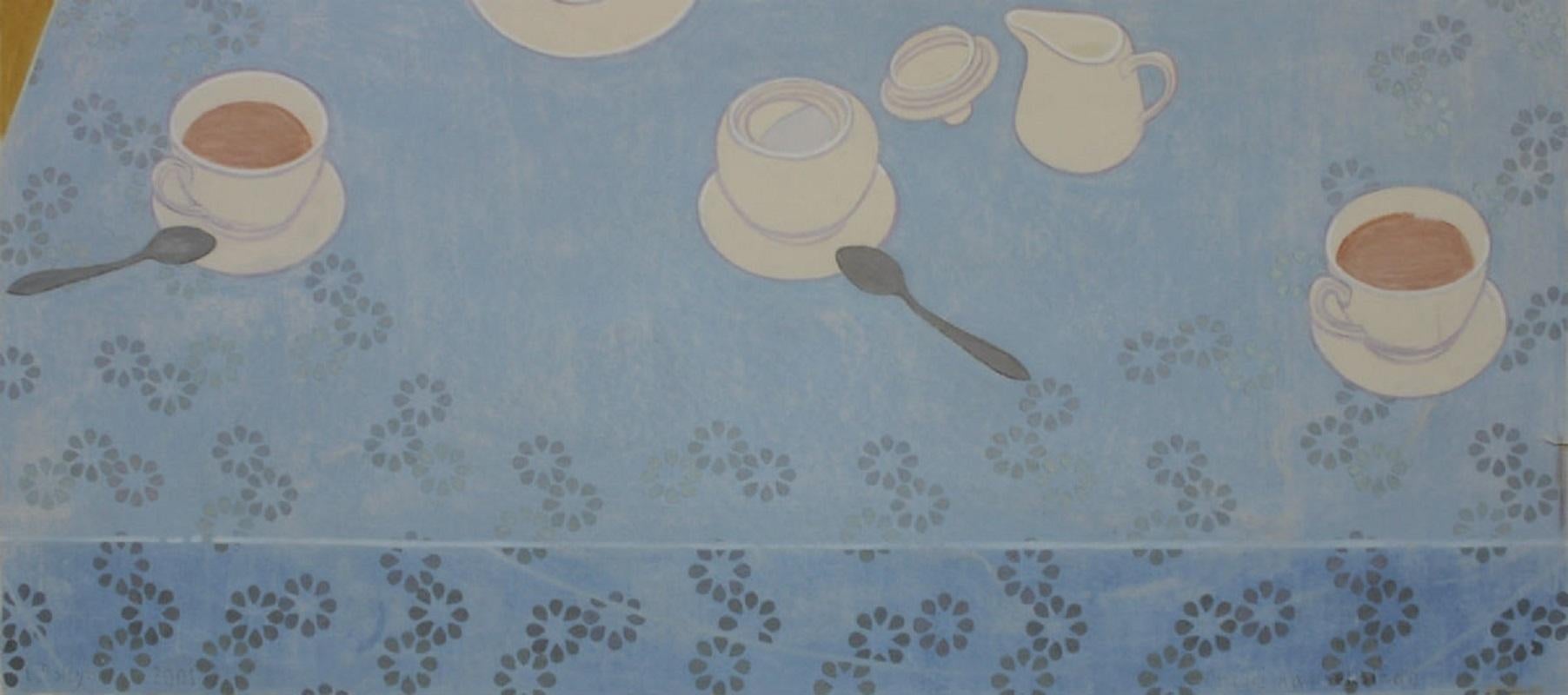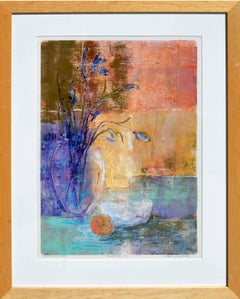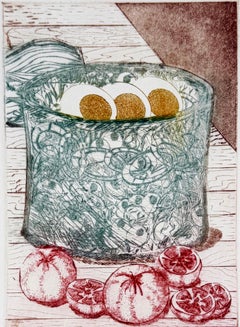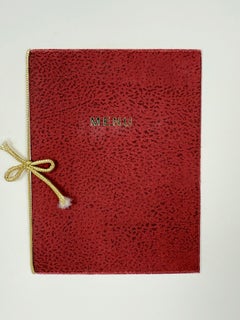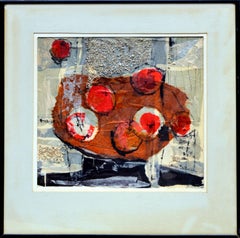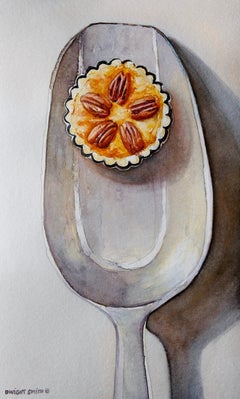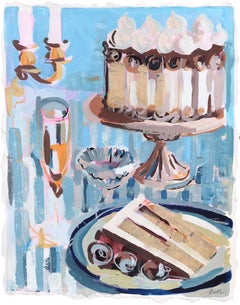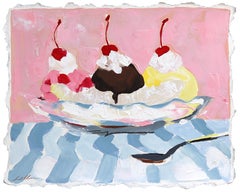Items Similar to "500 Calories al mode" The Perfect Meal - Menu - Dessert - Collograph Watercolor
Want more images or videos?
Request additional images or videos from the seller
1 of 10
Betty Swift"500 Calories al mode" The Perfect Meal - Menu - Dessert - Collograph Watercolor1983
1983
$750
£575.93
��€660.68
CA$1,053.84
A$1,180.23
CHF 615.83
MX$14,416.03
NOK 7,835.10
SEK 7,385.52
DKK 4,930.57
About the Item
"500 Calories al mode" The Perfect Meal - Menu - Dessert - Collograph Watercolor
The artwork "500 Calories al mode" by Betty Swift, created one of a group show at San Francisco State University Fall 1983, is a Collograph (Colotype) and watercolor print that combines elements of realism, featuring a slice of pie topped with a generous scoop of ice cream, presented in a style that suggests a rich, indulgent dessert. The background is a deep, warm red, highlighting the golden-brown tones of the pie and the creamy white of the ice cream. The composition, signed "Michael Parker" and numbered "8/15," showcases a traditional approach to still life, emphasizing texture and form through its intricate lines and subtle coloring. The overall composition is striking, combining realistic elements with an abstract, almost pop-art aesthetic. The use of color and contrast creates a visually engaging artwork.
Collograph print and watercolor on heavy watercolor paper
Signed lower right "Betty Swift" No. 8 of 15 impressions,
Paper: 14"H x 11"W
Image: 5"H x 7"W
Betty Swift is a bay area area printmaker
- Creator:Betty Swift (American)
- Creation Year:1983
- Dimensions:Height: 14 in (35.56 cm)Width: 11 in (27.94 cm)Depth: 0.5 in (1.27 cm)
- Medium:
- Movement & Style:
- Period:
- Condition:Very good condition. Some age toning to paper.
- Gallery Location:Soquel, CA
- Reference Number:Seller: RJA98771stDibs: LU54216512162
About the Seller
5.0
Platinum Seller
Premium sellers with a 4.7+ rating and 24-hour response times
Established in 1986
1stDibs seller since 2014
2,965 sales on 1stDibs
Typical response time: <1 hour
- ShippingRetrieving quote...Shipping from: Soquel, CA
- Return Policy
Authenticity Guarantee
In the unlikely event there’s an issue with an item’s authenticity, contact us within 1 year for a full refund. DetailsMoney-Back Guarantee
If your item is not as described, is damaged in transit, or does not arrive, contact us within 7 days for a full refund. Details24-Hour Cancellation
You have a 24-hour grace period in which to reconsider your purchase, with no questions asked.Vetted Professional Sellers
Our world-class sellers must adhere to strict standards for service and quality, maintaining the integrity of our listings.Price-Match Guarantee
If you find that a seller listed the same item for a lower price elsewhere, we’ll match it.Trusted Global Delivery
Our best-in-class carrier network provides specialized shipping options worldwide, including custom delivery.More From This Seller
View All"Moving Still Life " Abstract Still-Life Monotype
By Anita Benarde
Located in Soquel, CA
Oil on paper (Monotype) abstracted still-life by Anita Benarde (American, 20th century). Circa 2006. Signed "Anita Bernarde" lower right, titled "Moving Still Life" lower left. Presented in mat and wood frame. Image size: 29"H x 20.75"W.
Benarde studied art at St Martins, London, Michigan State, Brooklyn College.
SOLO EXHIBIT / PROFESSIONAL EXPERIENCE
2000 Princeton University, Princeton, N.J. 1998--- Curator, Princeton University
2000 Sovreign Bank, Princeton, N.J. 1990--- Cruise Line Lecturer
2000 U.S.Trust, Princeton, N.J. 1990/2007 – Cruise Art Workshops
1999 Forsgate Country Club, N.J. 2002- The Newark Museum, workshops
1996 Scanticon, Princeton, N.J. 1990 Rutgers University, Lecturer
1993 Johnson &Johnson 1987 Fordham University, Art Lecturer, N.Y.
World Headquarters 1985 The Dalton School, Workshops
New Brunswick, N.J. 1981 Parsons Sch.Of Design, N.Y.C.
1989 AT&T Corporate Center 1982 Hahnemann Medical U.,Phila. Pa.
Princeton,N.J. 1977 N.J. Magazine, Art Director
1986 Turkish Consulate Gallery 1977-84 Original Puzzles/Games Magazine
United Nations Plaza,N.Y. Marvel Publications, N.Y.C.
1988 Tatum Gallery...
Category
Early 2000s Contemporary Still-life Paintings
Materials
Oil, Archival Paper
"En Salada" Salad Fixings Intaglio on Paper by Joseph C. MaCarthy
Located in Soquel, CA
"En Salada" Salad Fixings Etching on Paper by Joseph C. MaCarthy
This Intaglio print, titled "En Salada," by San Francisco Bay area artist Joseph C. McCarthy (American, 20th C), cre...
Category
1980s American Realist Interior Prints
Materials
Watercolor, Laid Paper, Intaglio
"Menu" - "Eat Out More Often" - Intaglio Hand painted Print by Bernadette Emrick
Located in Soquel, CA
"Eat Out More Often" - Menu - Intaglio Hand painted Print by Bernadette Emrick
The artwork "Eat Out More Often - The Perfect Meal - Menu - by Bernadette Emrick (American, 20th C), ...
Category
1980s American Modern Figurative Prints
Materials
Laid Paper, Watercolor, Intaglio
Mid Century Apple Abstracted Still Life
By Anna Ballarian
Located in Soquel, CA
Stunning mid century textile abstract mixed media painting of apples by Anna Ballarian (American, 1911-2010). Signed " Anna Ballarian" lower ...
Category
1950s Abstract Expressionist Mixed Media
Materials
Stone
Mid-Century Modern Abstracted Cubist Table Still-Life in Acrylic on Masonite
Located in Soquel, CA
Mid-Century Modern Abstracted Cubist Table Still-Life in Acrylic on Masonite
Vibrant mid-century modern still life with abstracted synthetic cubist elements in warm colors, highligh...
Category
1970s American Modern Still-life Paintings
Materials
Masonite, Acrylic
"Fruit" Still Life - Post-Impressionist Outsider Art - Acrylic on Heavy Paper
Located in Soquel, CA
Bold and textured still life by Diana Mallett (American, b. 1981). A bright yellow banana and bright red apple sit on a multicolored surface, against a dark blue background. This pie...
Category
2010s Outsider Art Still-life Paintings
Materials
Paper, Acrylic
You May Also Like
Petite Treat, Original Painting
By Dwight Smith
Located in San Francisco, CA
Artist Comments
"My wife has been baking pecan pies for the holiday season," shares artist Dwight Smith," which inspired me to paint the still life. I love the warm colors of...
Category
21st Century and Contemporary American Realist Still-life Drawings and W...
Materials
Watercolor
Caldentey Mallorca original neo figurative watercolor paper painting
By Toni Caldentey
Located in CORAL GABLES - MIAMI, FL
original neo-expressionist acrylic painting
contemporary work by the mallorquin artist Toni CALDENTEY
CALDENTEY, Toni - (Portocolom, Mallorca - Spain)
The active notion of rhythm a...
Category
Early 2000s Neo-Expressionist Abstract Paintings
Materials
Watercolor, Cardboard
Triple Chocolate - Colorful Dessert Still Life Painting on Paper
By Kellie Newsome
Located in Los Angeles, CA
Columbus, Georgia (USA) based artist Kellie Newsome specializes in dynamic and abstracted still-life artworks. Her expressive style emphasizes line structure, creating vibrant painti...
Category
2010s Contemporary Still-life Paintings
Materials
Paper, Mixed Media, Acrylic
Sunday Funday - Abstract Pastel-Tone Ice Cream Still Life Painting on Paper
By Kellie Newsome
Located in Los Angeles, CA
Columbus, Georgia (USA) based artist Kellie Newsome specializes in dynamic and abstracted still-life artworks. Her expressive style emphasizes line structure, creating vibrant painti...
Category
2010s Contemporary Still-life Paintings
Materials
Paper, Mixed Media, Color Pencil
Still Lives - Watercolors on Paper by Simon Goldberg - 20th Century
By Simon Goldberg
Located in Roma, IT
Still Lives include two original drawings in watercolor on paper realized by Simon Goldberg (1913-1985), Hand-signed on the lower right on the first art...
Category
Early 20th Century Modern Figurative Drawings and Watercolors
Materials
Paper, Watercolor
Come for some chocolate - XXI century, Pastel figurative, Still life
Located in Warsaw, PL
Pastel by Lech Polcyn
Category
21st Century and Contemporary Other Art Style Figurative Drawings and Wa...
Materials
Paper, Pastel
More Ways To Browse
Modern Mode
Vintage Mode
Dessert Painting
W H Swift
Al Parker Vintage
Retro Ice Cream Scoop
Oil Paintings New York City
De Young
New York Lithographs
Paintings By A Silver
Paper Collage Art
Antonio Antonio
Paris Original Lithograph
European Vintage Art Prints
Water Images
French Antique Prints
Slim Aarons Prints
Vintage Art Books
